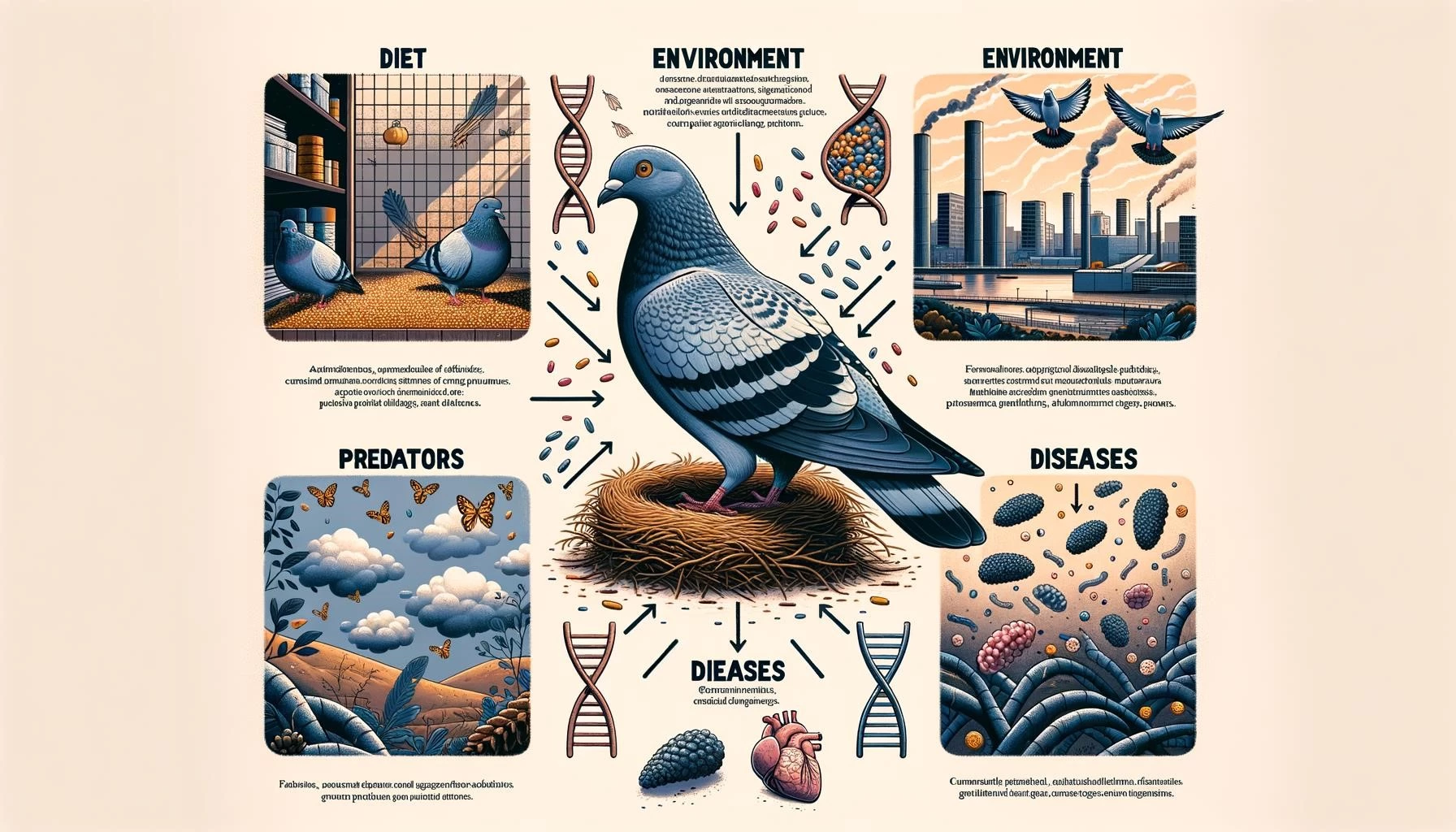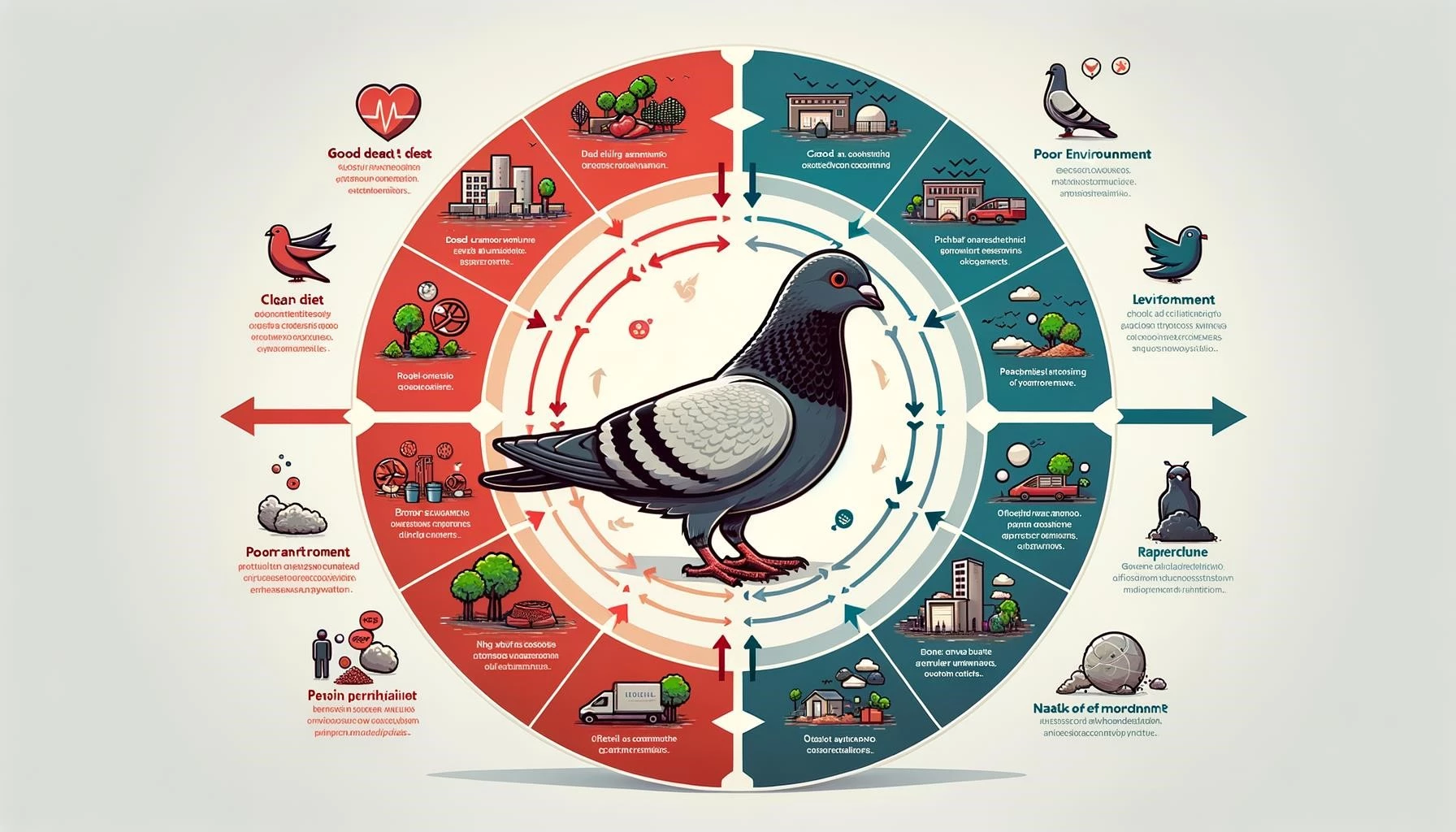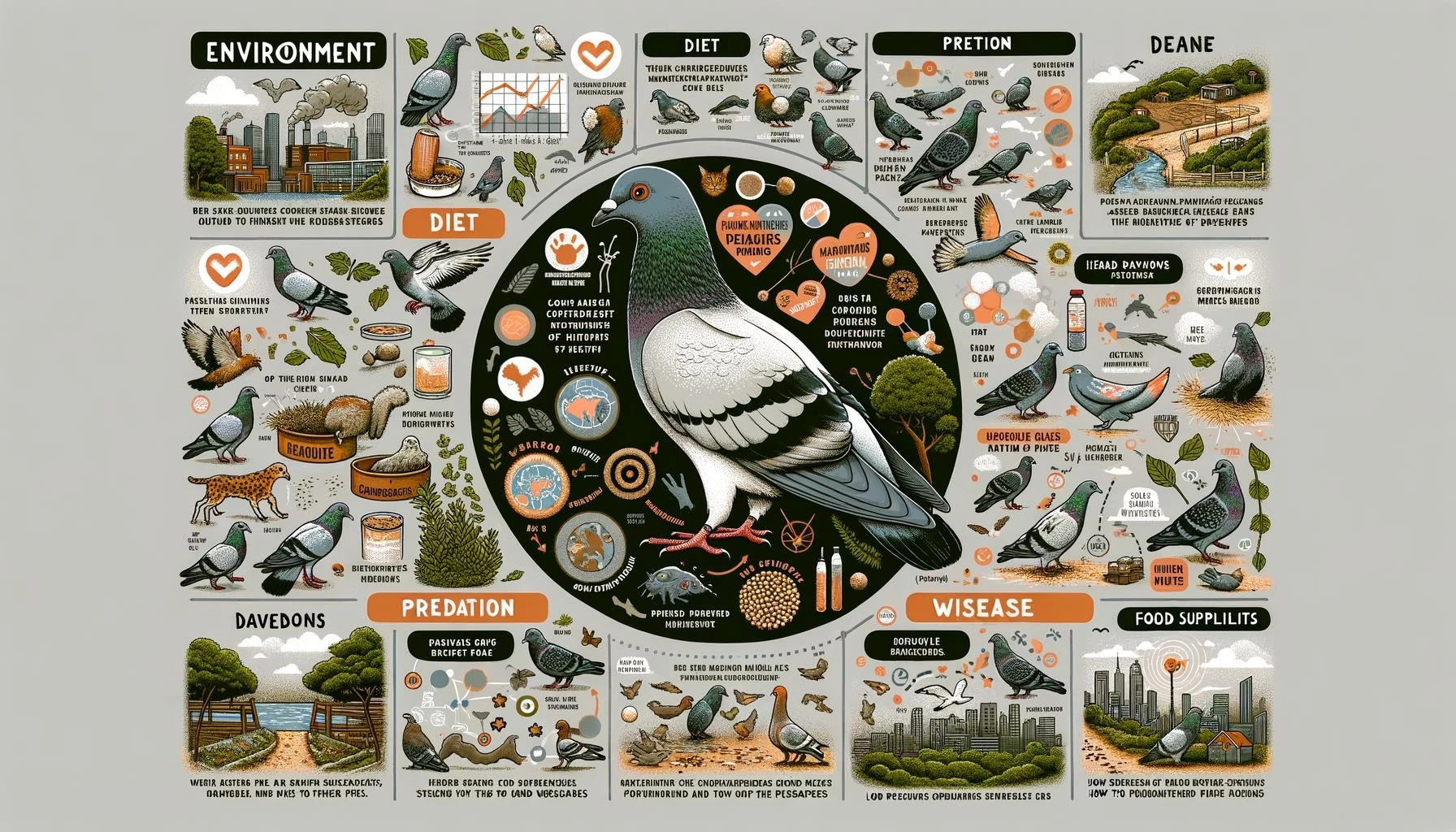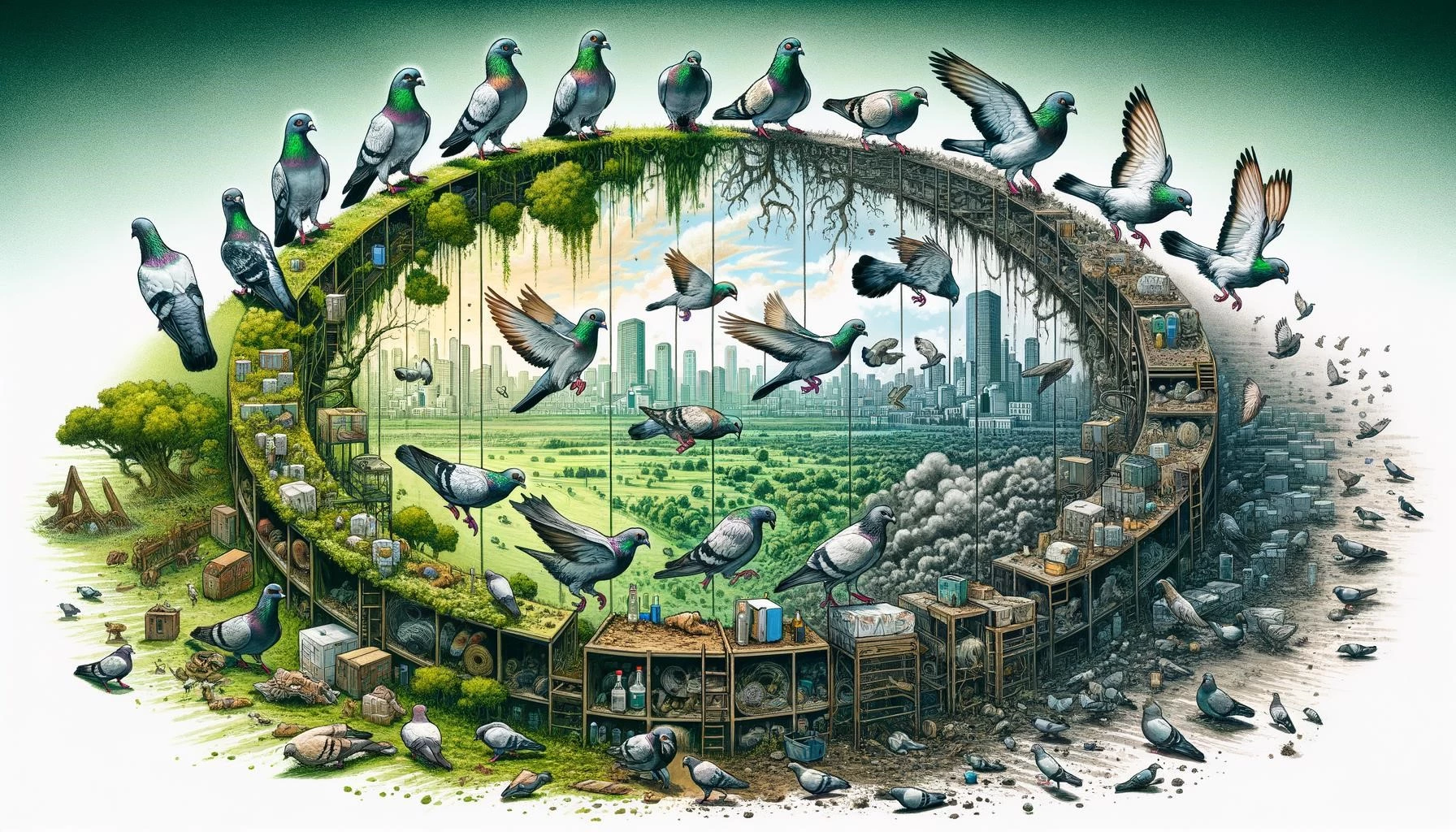Pigeons are commonly found in urban areas, often living in close proximity to humans. While they may be seen as a nuisance by some, pigeons play an important role in the ecosystem. However, there are concerns about diseases associated with pigeons and their potential impact on human health. Additionally, the lifespan of pigeons is an interesting aspect to consider, especially when comparing captive pigeons to those in the wild.
Key Takeaways
- Pigeon droppings carry over 60 diseases, including Cryptococcosis, Histoplasmosis, and Psittacosis. These diseases can be contracted by breathing in the dust created when cleaning droppings.
- Pigeons carry more diseases than rats, making them one of the most disease-carrying bird species.
- While captive pigeons can live for over 20 years with proper care, wild pigeons have a shorter lifespan of around 1 to 3 years due to natural predators and limited access to food and water.
Diseases Associated with Pigeons
Pigeons are known carriers of various diseases, with their droppings being a major source of contamination. Pigeon droppings can contain harmful pathogens, including bacteria, viruses, fungi, and parasites. Some of the diseases associated with pigeon droppings include:
- Cryptococcosis: This is a fungal infection caused by the Cryptococcus fungus. It can affect both humans and animals, commonly causing respiratory symptoms.
- Histoplasmosis: Histoplasmosis is a fungal infection caused by the Histoplasma capsulatum fungus. It primarily affects the lungs, causing flu-like symptoms.
- Psittacosis: Also known as parrot fever, Psittacosis is a bacterial infection caused by Chlamydia psittaci. It can cause pneumonia-like symptoms, including fever, cough, and shortness of breath.
It is important to note that the risk of contracting these diseases from pigeon droppings is relatively rare. However, individuals who are immunocompromised or have pre-existing respiratory conditions may be more susceptible. Proper precautions, such as wearing protective gear when cleaning pigeon-infested areas, can help minimize the risk of infection.
Pigeon Lifespan: Captive vs. Wild
The lifespan of pigeons can vary depending on their living conditions. Captive pigeons that are well-cared for can live for more than 20 years. However, in the wild, where pigeons face natural predators such as hawks and kites, as well as limited access to food and water, their lifespan is significantly shorter.
In urban areas, pigeons often rely on humans for food, which can extend their lifespan. However, in rural or natural environments, where pigeons must fend for themselves, their lifespan is typically shortened to around 1 to 3 years. This is due to the challenges they face in finding adequate food and water sources and the constant threat of predation.
It is important to note that while pigeons may carry diseases, they are generally healthy and clean creatures. The common perception of pigeons as filthy and disease-ridden is largely a misconception. Pigeons have adapted well to urban environments and are a familiar sight in many cities around the world.
In conclusion, pigeons can carry diseases, but the risk of contracting these diseases is relatively low. Proper precautions should be taken when cleaning areas contaminated with pigeon droppings. Additionally, the lifespan of pigeons can vary depending on their living conditions, with captive pigeons living significantly longer than their wild counterparts.









